All Navy ships that can sortie are leaving ports in Virginia as Hurricane Florence bears down on the Eastern Seaboard.
Adm. Christopher Grady, the commander of Norfolk-based U.S. Fleet Forces, ordered all Navy ships in the Hampton Roads area to set Sortie Condition Alpha, mandating all crews complete final preparations and begin sailing from their harbors on Monday.
“Our ships can better weather storms of this magnitude when they are underway,” said Grady in a written statement emailed to Navy Times.
The Navy counted nearly 30 vessels from Naval Station Norfolk and Joint Expeditionary Base Little Creek leaving Monday before high winds and rain lash the mid-Atlantic coast.
Navy Times chronicled a steady parade of submarines, guided-missile destroyers and cruisers moving Monday morning past Fort Monroe and into the haze of Chesapeake Bay and the Atlantic Ocean.
Behind them splashed the Coast Guard’s medium endurance cutter Bear, which left the Hampton Roads Sector around 1 p.m. on Monday.
“We’re moving out assets in preparation of potentially dangerous conditions in the path of the projected storm. We do that so that they can immediately return and begin rescue and recovery operations after the storm passes," said Public Affairs Specialist 3rd Class Joshua Canup by phone from district headquarters in nearby Portsmouth.

Navy warships incapable of getting underway because they are undergoing maintenance were ordered to take extra precautions to avoid potential damage, including latching on additional mooring and storm lines, disconnecting shore power cables and dropping anchor.
Navy Rear Adm. Charles W. Rock also ordered all installations in the Hampton Roads area to set Tropical Cyclone Condition of Readiness Three, which indicates officials anticipate sustained destructive winds of greater than 57 miles per hour within the next two days.
Sailors have begun sandbagging buildings, removing debris from drainage areas, barring automobiles in flood prone areas, topping off fuel in generators and relocating dumpsters and equipment to more secure areas, officials said.
Personnel and their families are encouraged to review hurricane checklists and evacuation plans in case officials order them to leave and to consult with their chain of command for the most accurate and up to date information.
Hardware stores and groceries in the Tidewater area reported throngs of shoppers storing up on emergency supplies Monday morning.
At the Costco near Naval Base Norfolk, the line stretched nearly 100 yards past the entry way, and carts snaked through the aisles shortly after it opened at 10 a.m.
On bases throughout the region, commissary officials are adjusting hours of operation to meet the needs of shoppers, said Kevin Robinson, spokesman for the Defense Commissary Agency.
The commissary at Marine Corps Recruit Depot Parris Island in South Carolina normally remains closed on Mondays but it opened to help service members and their families prepare for the upcoming storm.
Robinson said that store officials in the affected states will work with suppliers before and after the storm to keep shelves stocked.
"If there are early predictions of a coming storm we always adjust to provide extra storm-related supplies,” he said.
Robinson’s agency is moving generators to stores that are likely to be the hardest hit so that they can preserve perishable items such as meat and dairy products if the power goes out.
Since April, commissary stores have been running sales on items for survival kits, such as batteries, weather-ready flashlights, first-aid supplies, lighters, matches, lanterns, candles, hand sanitizers, beef jerky, soup and chili mixes, powdered milk and cereals.
Items vary from store to store, but the sales continue during the annual hurricane season through Oct. 31, he said.
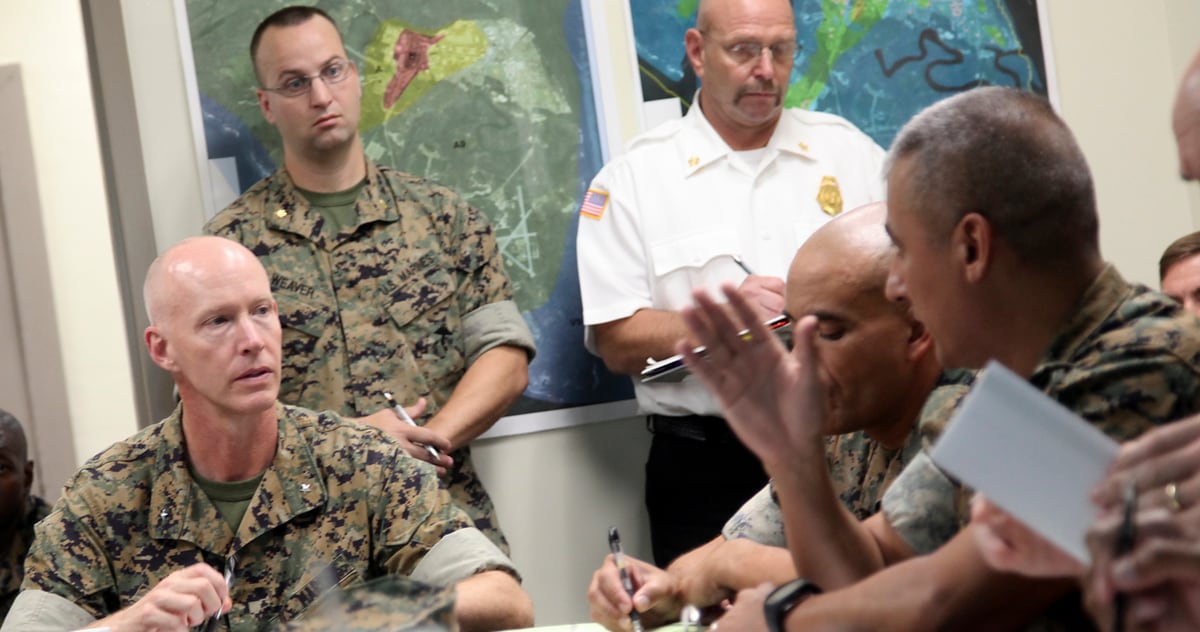
Tricare beneficiaries in North Carolina, South Carolina, and Virginia will be allowed to receive emergency refills until Sept. 20 if they need them, the Defense Health Agency announced Monday.
Beneficiaries should take their prescription bottles to any of the more than 58,000 Tricare retail network pharmacies located throughout the U.S. or U.S. territories or call Express Scripts at 877-363-1303.
Beneficiaries don’t need a referral to receive urgent care services. They’re allowed to get non-emergency care for illness or injuries from Tricare-authorized urgent care clinics if their primary care providers aren’t available due to weather disruptions.
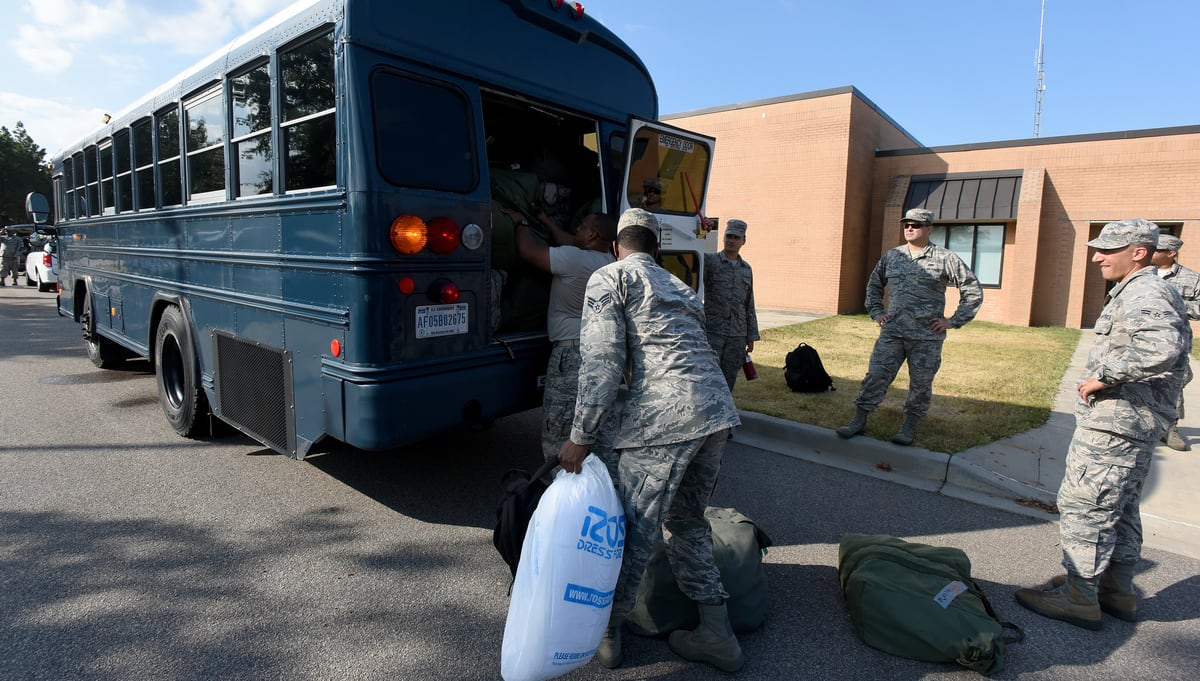
Warning that Florence is expected to become “an extremely dangerous major hurricane,” weather forecasters at the National Hurricane Center say it’s being fueled by warm Atlantic waters and will rapidly intensify into a catastrophic Category 4 storm with maximum sustained winds near 130 mph.
About 570 miles south-southeast of Bermuda on Monday afternoon and moving at 13 mph, meteorologists predict it likely will strike the South Carolina or North Carolina coast on Thursday.
After calling up more than 200 National Guardsmen, North Carolina Gov. Roy Cooper said that coastal communities would begin evacuating residents on Monday morning.
Cooper told reporters that he’s asked President Donald Trump to declare a disaster now so that state officials could begin to draw on federal aid as soon as possible.
His moves parallel those in South Carolina, where officials began mobilizing nearly 800 National Guard soldiers and airmen on Saturday to work alongside civilian agencies prepping for disaster relief efforts.
RELATED
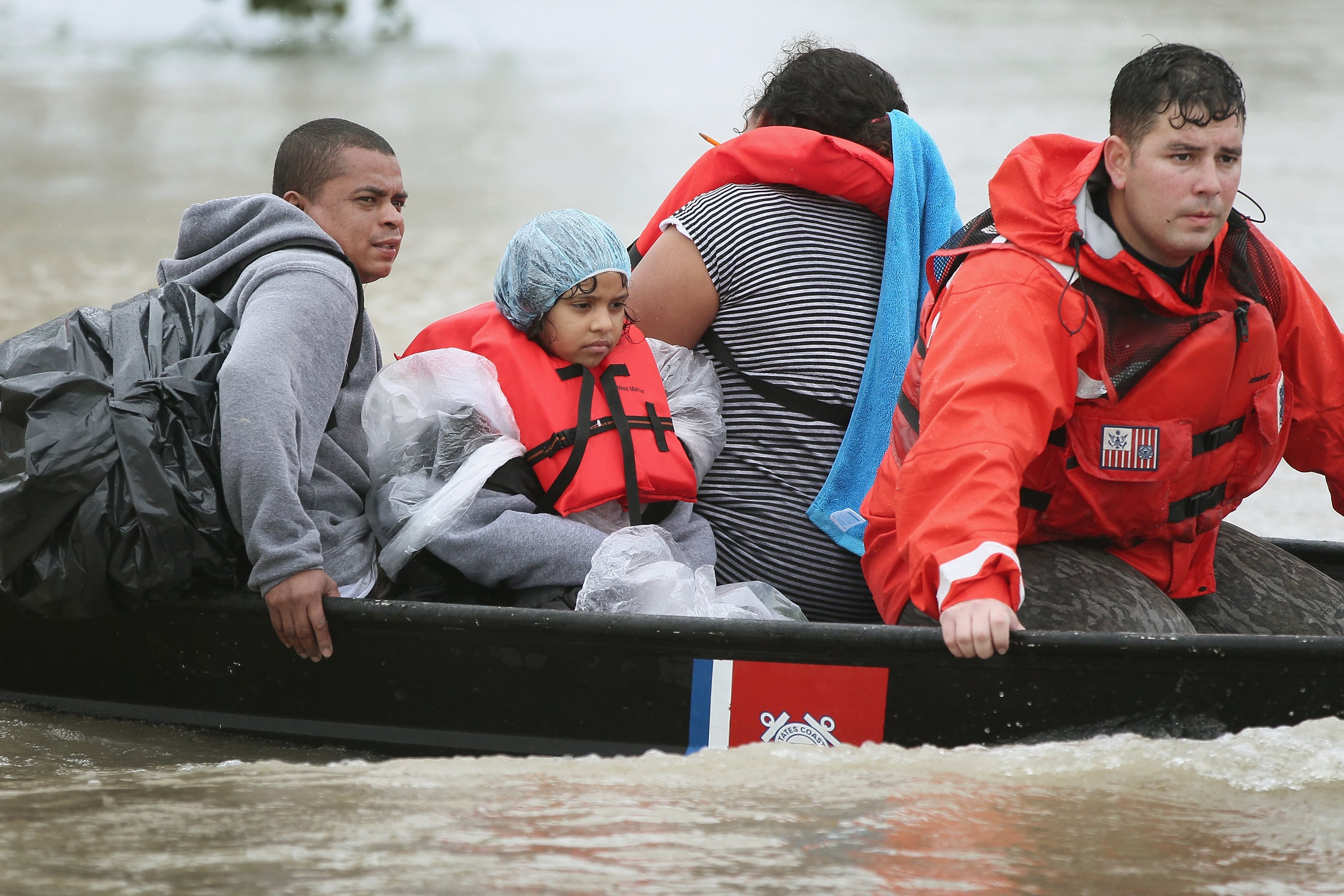
The National Hurricane Center on Monday cautioned that Florence already is generating swells that are menacing Bermuda and portions of the U.S. East Coast and are likely to cause life-threatening surf and rip current conditions.
The Coast Guard Captain of the Port of South Carolina announced early Monday condition Whiskey, which anticipated sustained tropical storm force winds of 39 mph within the next three days.
Although the ports remain open to commercial operations, Coast Guard officials warned mariners that the ports are safest when the number of vessels there are at a minimum. All ocean-going commercial vessels and large barges were ordered to make plans for departing the piers.
Pleasure craft owners were advised to seek safe harbor and commuters were warned that drawbridges might not work if sustained winds reach 25 mph.
The Marine Corps announced Sunday that Brig. Gen. James Glynn stood up an emergency operations center at South Carolina’s Recruit Depot Parris Island and officials continue to work closely with both state and Beaufort County Emergency Services as the storm nears.
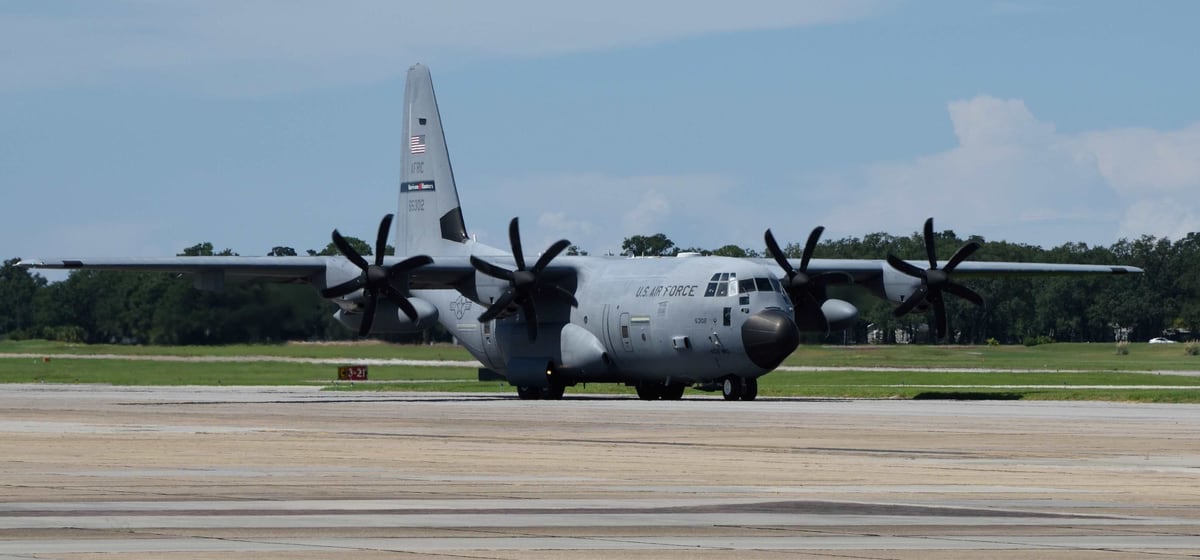
While the Navy sorties out of port, the Air Force Reserve’s 53rd Weather Reconnaissance Squadron is flying into the gut of the hurricane.
The Hurricane Hunters said their first reconnaissance mission for Florence began Monday morning but they started flying into Hurricane Olivia near Hawaii on Saturday.
Olivia is expected to near the Hawaiian islands by Tuesday, according to the Central Pacific Hurricane Center.
Other Air Force planes will leave Virginia.
The F-22 Raptors and T-38 Talon training jets at Joint Base Langley-Eustis near the mouth to the Chesapeake Bay are slated to start flying to Ohio’s Rickenbacker Air National Guard Base on Tuesday, the Associated Press reported.
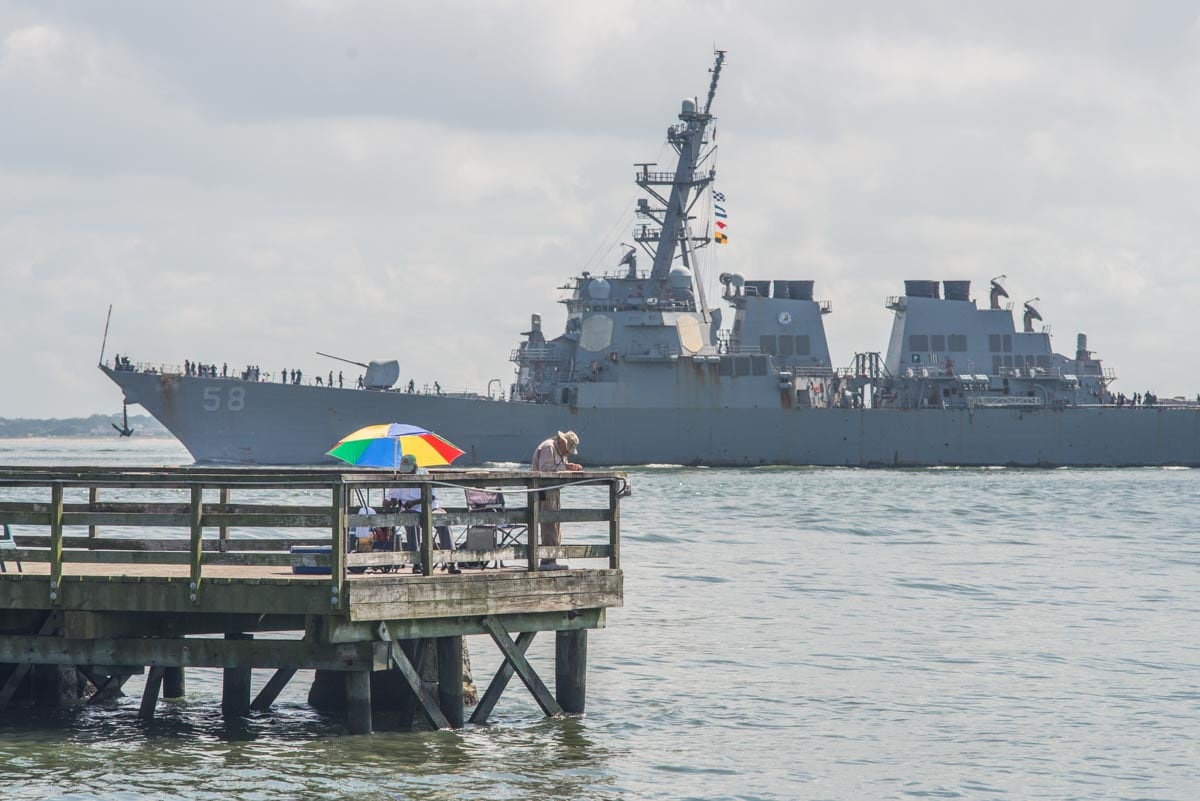
The Hurricane Hunters tracking Florence will operate out of Georgia’s Savannah/Hilton Head International Airport.
They plan on passing through the eye of the storm at least four times daily to release dropsondes, which collect data such as surface winds and pressure readings on their descent to the waves and transmit the information to the National Hurricane Center every 10 minutes through satellite communications.
Two other storms are in the Atlantic chute behind Florence. Packing maximum sustained winds of 105 mph, Category 2 Hurricane Helene is rumbling in the mid-eastern Atlantic behind Florence, according to the National Hurricane Center.
Behind Helene is the weaker Hurricane Isaac, which is on a westward course in the tropical Atlantic Ocean to hit the Lesser Antilles later this week and Haiti by Saturday morning.
Karen has covered military families, quality of life and consumer issues for Military Times for more than 30 years, and is co-author of a chapter on media coverage of military families in the book "A Battle Plan for Supporting Military Families." She previously worked for newspapers in Guam, Norfolk, Jacksonville, Fla., and Athens, Ga.
Mark D. Faram is a former reporter for Navy Times. He was a senior writer covering personnel, cultural and historical issues. A nine-year active duty Navy veteran, Faram served from 1978 to 1987 as a Navy Diver and photographer.




